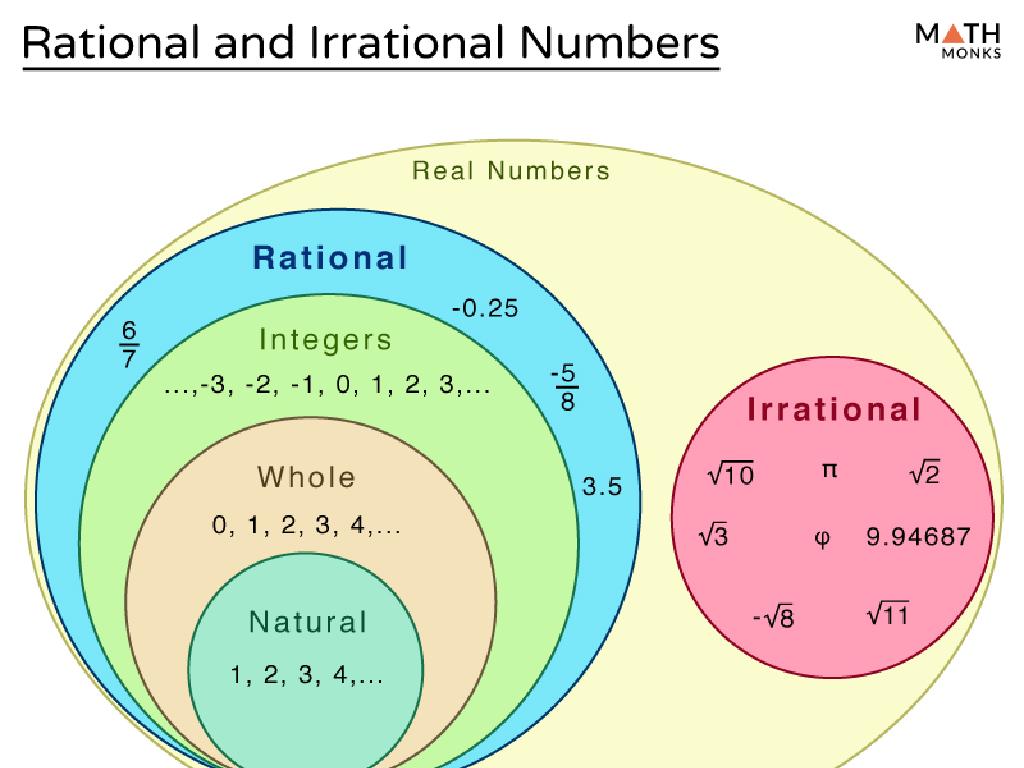Compare Animal Life Cycles
Subject: Science
Grade: Fourth grade
Topic: Animals
Please LOG IN to download the presentation. Access is available to registered users only.
View More Content
Welcome to Animal Life Cycles
– What is a Life Cycle?
– A process an animal goes through from birth to adulthood.
– Stages of Life Cycles
– Birth, growth, reproduction, and death are common stages.
– Comparing Different Animals
– How does a butterfly’s life differ from a frog’s?
– Importance of Comparison
– Helps us understand biodiversity and adaptation.
|
This slide introduces the concept of life cycles and their importance in the animal kingdom. A life cycle is the series of changes an animal goes through from the beginning of its life until its death. It’s crucial for students to recognize that while all animals have life cycles, these can vary greatly between species. For example, a butterfly undergoes metamorphosis, while a mammal does not. By comparing these life cycles, students can gain insights into how different animals adapt to their environments and evolve over time. Encourage students to think about the life cycles of animals they are familiar with and be prepared to explore how these life cycles compare to others in subsequent lessons.
Understanding Animal Life Cycles
– What is a Life Cycle?
– A series of stages from birth to death that an organism passes through.
– Key Stages: Birth to Death
– Birth, growth, reproduction, and death are the main stages.
– Each Animal’s Unique Cycle
– For example, a butterfly’s life cycle includes stages as an egg, caterpillar, pupa, and adult.
– Life Cycle Stages in Detail
|
This slide introduces the concept of a life cycle, which is the sequence of stages an organism goes through from the beginning of its life until its death. Emphasize that while all animals go through these stages, each species has a unique life cycle. For instance, insects like butterflies have very distinct stages, whereas mammals have less visually dramatic stages. Encourage students to think about the life cycles of animals they are familiar with and how they might differ. This will set the foundation for comparing different animal life cycles in subsequent lessons.
Life Cycle of a Frog
– Frogs start as eggs in water
– Eggs are laid in clusters in water bodies
– Tadpoles hatch from eggs
– Tadpoles swim and breathe underwater
– Tadpoles grow legs (Froglets)
– Legs begin to form; tail shrinks
– Froglets become Adult Frogs
– Fully grown frogs can leave the water
|
This slide introduces students to the life cycle of a frog, which is a classic example of metamorphosis in animals. Start by explaining that the life cycle begins with eggs, which are laid in water. These eggs hatch into tadpoles, which are baby frogs that live entirely in water. As tadpoles grow, they develop legs and their tails become shorter, turning them into froglets. Finally, froglets undergo further changes to become adult frogs, capable of living on land. Encourage students to think about how this life cycle compares to other animals and to consider the different habitats the frog lives in during its life.
Life Cycle of a Butterfly
– Start with eggs on a leaf
– Butterflies lay eggs on leaves, which hatch into larvae.
– Grow into caterpillars (larva)
– Caterpillars are the larvae stage; they eat a lot to grow.
– Transform into chrysalis (pupa)
– In the pupa stage, caterpillars develop inside the chrysalis.
– Emerge as adult butterflies
– Finally, they become adult butterflies and the cycle repeats.
|
This slide introduces the life cycle of a butterfly, which is a great example to help students understand metamorphosis in insects. Begin by explaining how the cycle starts with eggs laid on leaves. Then, describe how these eggs hatch into caterpillars, which are the larval stage of a butterfly’s life cycle. Discuss the transformation that occurs during the pupal stage when the caterpillar encases itself in a chrysalis. Conclude with the emergence of the adult butterfly, which will then lay eggs, continuing the cycle. Encourage students to think about how this cycle is similar to or different from other animals they know.
Comparing Frog and Butterfly Life Cycles
– Similarities in life cycles
– Both go through distinct stages of development
– Differences in life cycles
– Frogs start as eggs in water, butterflies lay eggs on leaves
– Frog metamorphosis stages
– Frogs: egg -> tadpole -> froglet -> adult frog
– Butterfly metamorphosis stages
– Butterflies: egg -> caterpillar -> chrysalis -> adult butterfly
|
This slide aims to compare and contrast the life cycles of frogs and butterflies, highlighting both similarities and differences. Students should understand that while both animals undergo metamorphosis, the stages they go through and their habitats are different. Frogs lay eggs in water, and their young must adapt to an aquatic environment before transitioning to land. Butterflies, on the other hand, lay their eggs on leaves, and their caterpillars are land-based from the start. Discuss the stages of metamorphosis for each animal, emphasizing the transformation from egg to adult. Encourage students to think about why these life cycles are important for each animal’s survival in their respective environments.
Life Cycles of Different Animals
– Mammals: Birth to Growth
– Mammals are born alive and grow directly.
– Birds: Egg to Adult
– Birds hatch from eggs and grow into adults.
– Fish: Eggs to Adult
– Fish begin as eggs, then larvae, juvenile, before adulthood.
– Comparing Life Stages
|
This slide aims to compare the life cycles of mammals, birds, and fish, highlighting the stages they go through from birth to adulthood. Mammals are unique in that they give live birth and the offspring grow directly without intermediate stages. Birds, on the other hand, begin life as an egg and then hatch into chicks before maturing into adults. Fish have a more complex cycle starting with eggs, then moving to the larval stage, followed by a juvenile phase before reaching adulthood. Encourage students to think about how these life cycles are similar and different, and discuss the reasons behind these differences. This comparison helps students understand the diversity of life and the various reproductive strategies in the animal kingdom.
Create Your Animal Life Cycle
– Choose an animal to study
– Draw the animal’s life cycle stages
– Include stages like birth, growth, reproduction, and death
– Label each stage clearly
– Use words and pictures to describe each part of the cycle
– Get ready to present to the class
|
This activity is designed to help students understand the concept of life cycles by researching and visualizing the stages of life for a specific animal. Students should be encouraged to choose an animal they are interested in and draw the distinct stages that animal goes through from birth to adulthood and eventually to the end of its life cycle. They should label important events like hatching, metamorphosis, or molting, depending on the animal. This will also enhance their presentation skills as they will explain their work to their classmates. For the teacher: Provide examples of different animals’ life cycles to inspire the students. Prepare to assist them in researching their chosen animal and guide them in creating accurate and informative diagrams. Have materials ready for drawing and labeling.
Class Discussion: Exploring Life Cycles
– Share today’s learning on life cycles
– Compare similarities and differences
– Think about stages like birth, growth, reproduction, and death
– Discuss the importance of life cycles
– Life cycles show how species survive and reproduce
– Reflect on new insights gained
– How does this knowledge help us appreciate nature?
|
This slide is meant to facilitate a class discussion reflecting on the day’s lesson about animal life cycles. Encourage students to articulate what they’ve learned about the stages of different animals’ lives. Guide them to compare and contrast these stages between species, such as insects, mammals, and amphibians, and to consider both the similarities and the unique aspects of each. Discuss why understanding these cycles is crucial for grasping concepts of biology and ecology, such as adaptation and ecosystem dynamics. This conversation will help students see the broader significance of life cycles in understanding the natural world and the interconnectedness of living organisms.
Wrapping Up: Animal Life Cycles
– Recap of animal life cycles
– Why life cycles matter
– Understanding life cycles helps us protect animals and their habitats.
– Homework: Paragraph on an animal
– Choose your favorite animal and research its life cycle stages.
– Share your findings next class
– Be ready to discuss how your animal grows and changes.
|
As we conclude, remind students of the stages in animal life cycles and their importance to the survival of species. Emphasize how this knowledge can contribute to conservation efforts. For homework, students will write a paragraph about their favorite animal’s life cycle, encouraging them to apply what they’ve learned. They should include stages like birth, growth, reproduction, and death. This exercise will help reinforce their understanding and prepare them for a discussion in the next class, where they can share and compare different life cycles.





